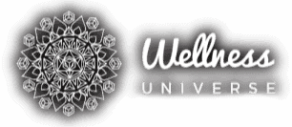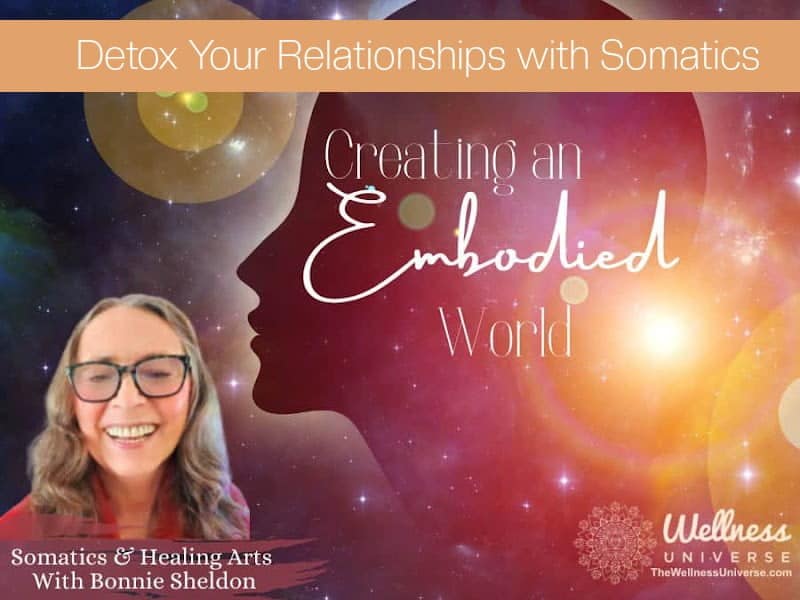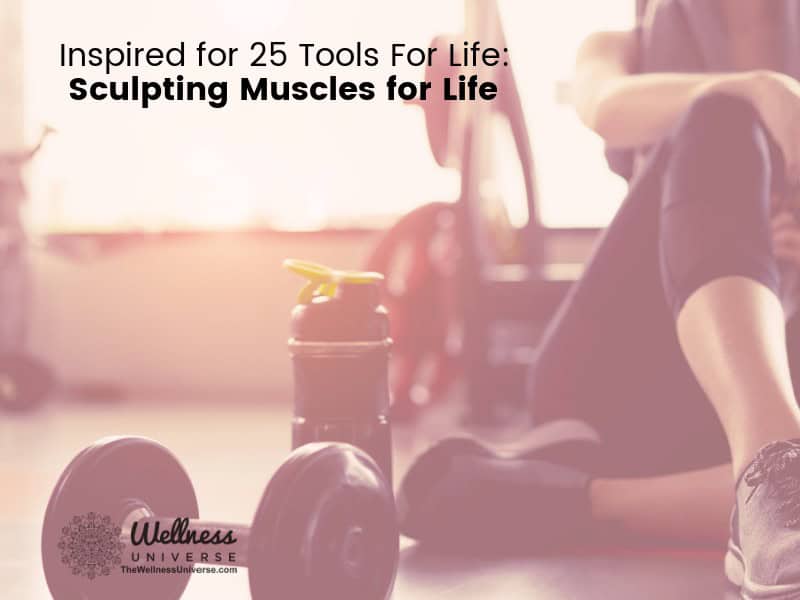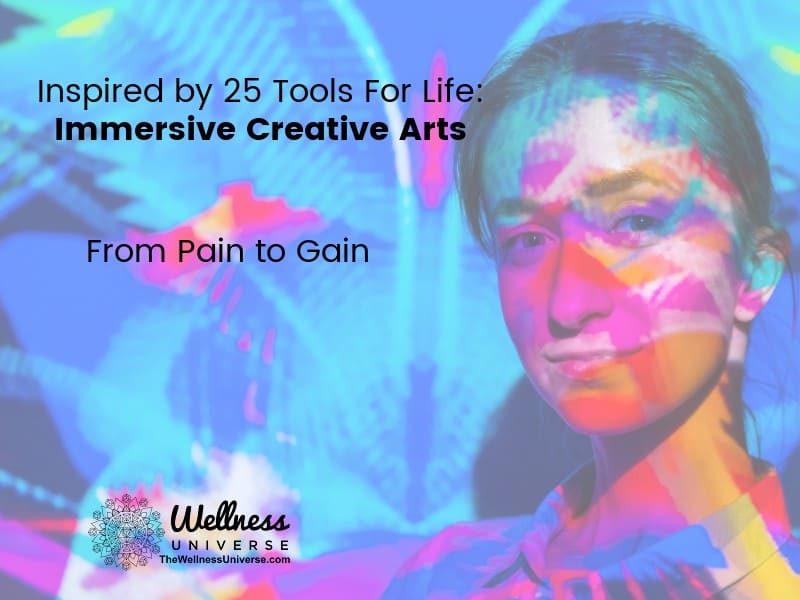When you look back on relationships that ended badly, can you remember feeling physical discomfort when you were with those people? A queasy stomach, a growing headache, a feeling of jumpiness, an internal quiver—all are keys to sparking inquiry about relationship health. By using Embodiment Practices, we can work at our deepest levels to recognize toxic relationships while they’re happening and take the necessary steps to live in emotional, mental, and spiritual peace.
When detoxifying our relationships, we intentionally create as much interpersonal distance as possible because of the harmful dynamics within them. This distance gives us the space to heal and regain our emotional balance. Deciding to remove toxic people from our lives frees up space for healthier relationships and better overall health.
Exposure to negativity, manipulation, and emotional abuse increases stress, anxiety, and depression. Individuals in such relationships often suffer from low self-worth and confidence. Recognizing and addressing toxicity is crucial for mental and emotional well-being.
The detoxing work can begin when we connect to the physical analog of emotions. Embodiment plays a crucial role here, as the body-mind serves us best when we understand the relationship between sensations and feelings. By tuning into our physical experiences, we can better navigate our emotional landscapes.
Here’s the good news: There are several methods that we can use to lighten the load. This is the foundation for a more profound healing and mindful, healthy relationship rhythm worldwide. If we detoxify our relationships individually, the world will become much healthier.
Here are a few real-life examples of how embodiment can help detox relationships:
Mindful Movement and Awareness: Alex, a meditation teacher, noticed a burdened chest and a knot in his stomach every time he got together with a colleague. He became increasingly aware of these physical sensations through daily meditation and mindful movement, becoming familiar with them as signs of stress and discomfort. Being aware of his feelings, Alex reflected on his relationship with this colleague and realized that it was draining his energy. He set proper boundaries and gradually avoided their interactions, significantly boosting his well-being.
Emotional Freedom Techniques (EFT Tapping): Lisa, a graphic designer, was experiencing her usual litany of feelings when dealing with a demanding client and was unwilling to work with her. After one tapping session (where she would tap on acupressure points along the top of the head, collar bones, etc. while focusing on her frustration and being overwhelmed by this client), she reported a wave of emotions being released in tears. She ended the session, reporting that it had given her a clearer perspective and that she was ready to sit down with the client and address her boundaries and challenges. Lisa was elated that she felt in a position to be able to communicate her boundaries and expectations more clearly. She later reported that the working relationship had more balance and respect.
Expressive Movement and Bodywork: Michael, a musician, turned to these somatic practices to process his emotions after a difficult breakup. He engaged in activities like expressive movement and bodywork, which allowed him to release the pent-up emotions stored in his body. Through these practices, Michael reconnected with his inner self, healed from the emotional pain, and opened himself up to healthier relationships in the future.
Body Scanning and Journaling: Emma, a life coach, practiced body scanning and journaling daily. She would regularly scan her body to observe and notice where she tensed up and suffered from strain and pain. This helped her notice the impact of certain relationships on her body. Journaling about how she felt in her body as a response to these strains helped her see repeated patterns and then consciously choose to withdraw from certain relationships that were not conducive to her well-being.
Breathwork and Visualization: David, a software engineer, felt stressed after interacting with a chronically critical team member. He used breathing exercises and imagery to help himself feel calm and clear. He did a few minutes of deep breathing while picturing himself in peace and tranquility. In this state, he could express his views to the team members with less anxiety, using calmness and assertiveness. This helped him get along better with the team members and feel better about himself.
Understanding relationship detox involves recognizing and removing toxic connections that drain our energy and negatively affect our well-being.
Signs of Toxic Relationships
Constant criticism: In a toxic relationship, you can be criticized no matter what you do. This strips away your self-esteem by making you feel inadequate. It’s suitable for someone to let you know when you’re wrong, but constant negative comments and belittling words harm your self-esteem.
Manipulation: Manipulation is controlling or influencing another person dishonestly or underhandedly. This includes guilt-tripping and emotional blackmail, or telling you what you want to hear to get what they want. This behavior might leave you questioning your judgment and feeling caught up in the relationship.
Lack of Support: A healthy relationship should give you support and encouragement. In a toxic relationship, however, your needs and achievements are likely overlooked or belittled. In the long run, this can make you feel isolated, undervalued, and unsupported.
Emotional or Physical Abuse: Any abuse is a clear red flag that you’re in a toxic relationship. If someone verbally attacks you or threatens you, that’s emotional abuse. If someone calls you names, makes fun of you, threatens to reveal your deepest secrets, tempts you into losing your temper (so you might hear, “I told you not to do that!”), or blames you for their insecurities, you’re being emotionally abused. Abuse, whether physical or emotional, will have long-lasting consequences for your physical and mental health, and you deserve better than that.
Jealousy and possessiveness: Constant jealousy and possessiveness are symptoms of a toxic relationship. Suppose a person is always questioning what you are doing, who you are talking to, or who you are hanging out with. In that case, it creates an unhealthy, stressful environment.
Gaslighting: The toxic person will manipulate you by making you feel as though you’re not in touch with reality or your past, or they’ll confuse you by making you question what they’ve said or done in the past.
Isolation: Toxic people often try to isolate you from friends, family, or any other source of support. They won’t like it if you spend time with others, and it might make you feel bad for wanting to have relationships.
Unpredictable Behavior: This means that you have no idea how your partner will react in any given situation or what to expect from them, making the relationship highly anxiety-provoking.
Accountability: The abuser refuses to be responsible for his or her actions. They might make excuses, blame others, or deny that there is a problem.
Practicing mindfulness is a powerful way to become aware of your body’s responses to different relationships.
By paying close attention to your physical sensations, you can gain insights into how certain interactions affect your well-being. Start by incorporating mindfulness techniques into your daily routine, such as:
Meditation: Set aside a few minutes daily to sit quietly and focus on your breath. As you breathe in and out, notice any areas of tension or discomfort in your body. This practice helps you become more attuned to your physical state and how it changes in response to different relationships.
Body Scans: Perform a body scan by lying down or sitting comfortably. Close your eyes and mentally scan your body from head to toe, paying attention to any areas of tightness, pain, or relaxation. This technique helps you identify physical manifestations of stress or discomfort that may be linked to toxic relationships.
Mindful Observation: Throughout your day, take moments to check in with your body. Notice how you feel when interacting with different people. Are there certain individuals who make you feel tense or drained? Becoming aware of these patterns can guide you in making healthier relationship choices.
Healing and Letting Go from an Embodiment Perspective
Healing from past relationship wounds and letting go of relationships that no longer serve your well-being are essential steps in fostering a healthy, balanced life. From an embodiment perspective, this process involves deeply connecting with your body to understand and release the emotional and physical impacts of these relationships.
How to Practice Relationship Detox
Here are some methods to recognize how these relationships affect your body and take steps to release their negative impact.
Body Awareness Embodied Practice: Pay attention to how your body responds to different relationships. Notice any physical sensations of tension, discomfort, or fatigue when you think about or interact with certain individuals. These sensations are your body’s way of signaling that something is not right.
Benefits: By tuning into your body’s signals, you can gain clarity on which relationships are draining your energy and negatively impacting your well-being.
Grounding and Centering Embodied Practice: Use grounding techniques to reconnect with your body and the present moment. Stand or sit firmly on the ground, take deep breaths, and visualize roots growing from your feet into the earth. This practice helps you feel stable and centered, making it easier to make decisions that honor your well-being.
Benefits: Grounding helps you stay connected to your inner strength and wisdom, empowering you to let go of relationships that are not serving you.
Rituals of Release Embodied Practice: Create a ritual to symbolize the release of a toxic relationship. This could involve writing a letter to the person (which you don’t have to send), expressing your feelings, and then physically letting go of the letter by burning it or tearing it up. Engage your body in the process by focusing on your breath and the sensations in your body as you perform the ritual.
Benefits: Rituals provide a tangible way to release emotional attachments, helping you move forward with closure and empowerment.
Techniques for Healing from Past Relationship Wounds
Forgiveness Embodied Practice: Forgiveness is a powerful tool for healing, but it often requires more than just a mental decision. Engage in a Physical Movement Practice such as yoga or tai chi, take long walks in nature, or go to the beach, for example, to help release the tension and resentment stored in your body. As you move, focus on the intention of letting go of past hurts and opening your heart to forgiveness.
Benefits: This practice helps to release the emotional and physical burden of holding onto grudges and resentment, promoting a sense of peace and emotional freedom as you recover from long-term wounds.
Self-Compassion Embodied Practice: Cultivate self-compassion through gentle touch and affirmations. Place your hands over your heart or any area of your body that feels tense or hurts. Speak kind and supportive words to yourself, such as “I am worthy of love and respect” or “I am healing and growing every day.”
Benefits: This practice helps to soothe and nurture your body, reinforcing a positive self-image and fostering emotional resilience.
Somatic Release Embodied Practice: Engage in somatic practices like shaking, dancing, or expressive movement to release stored emotions. Allow your body to move freely and intuitively, expressing any feelings of sadness, anger, or grief that arise.
Benefits: This practice helps to physically release pent-up emotions, creating space for new, positive experiences and relationships.
By incorporating these embodied practices into your healing journey, you can more effectively process and release the emotional and physical impacts of past relationships. This holistic approach promotes personal well-being and creates space for healthier, more fulfilling connections in your life.
In this three-part Embodied Detoxing series, we first explored detoxing our bodies from alcohol and offer you the chance to do that with Sober September, a 30-day Challenge. Next week, we’ll conclude with “Detox Your Environment: Embodied Decluttering.”
For support in your Sober September 30-Day Challenge, join Bonnie in the Wellness Universe Lounge on August 28th at 12:00 pm EDT to kickstart your journey towards a month of sobriety.
This 60-minute session will help you establish your purpose, set achievable goals, and discover practices to maintain commitment throughout the month. Learn strategies to navigate social situations, practice mindfulness meditation for resilience, and map a personalized plan for success. Embrace the opportunity to reconnect with your body and mind, and experience the freedom and clarity that sobriety can bring.
Learn how to resist cravings during your Sober September journey by joining Bonnie in the Wellness Universe Lounge on September 12th.
In this supportive and empowering session, we will explore the transformative power of EFT (Emotional Freedom Techniques) to help you manage and overcome cravings. Whether you’re taking part in the Sober September Challenge or seeking tools to resist any type of craving, this class is designed to provide you with practical techniques and emotional support.
Connect with Bonnie on The Wellness Universe.
You can also follow Bonnie on Facebook and Instagram.
References
“Relationship over? Try detox for 90 days” https://www.detroitnews.com/story/life/2017/09/10/love-detox/105482610/
“10 Signs of a toxic relationship & 5 Efficient Ways to Detoxify it” https://www.linkedin.com/pulse/10-signs-toxic-relationship-5-efficient-ways-detoxify-bobolas/
All information, content, and material are for informational purposes only and are not intended to serve as a substitute for the consultation, diagnosis, and/or medical treatment of a qualified physician or healthcare provider. The information supplied through or on this page, or by any representative or agent of The Wellness Universe, is for informational purposes only and does not constitute medical, legal, or other professional advice. Health-related information provided through this website is not a substitute for medical advice and should not be used to diagnose or treat health problems or to prescribe any medical devices or other remedies. The Wellness Universe reserves the right to remove, edit, move, or close any content item for any reason, including, but not limited to, comments that are in violation of the laws and regulations formed pursuant to the Federal Food, Drug, and Cosmetic Act. None of the posts and articles on The Wellness Universe page may be reprinted without express written permission.
Healing. Here. Now. Mindfulness, Trauma, and Recovery
Elizabeth brings her experience in stress management, trauma, addiction recovery, and neuroscience as it relates to trauma recovery and healing.
Catch the replay – https://bit.ly/HealingHereNow
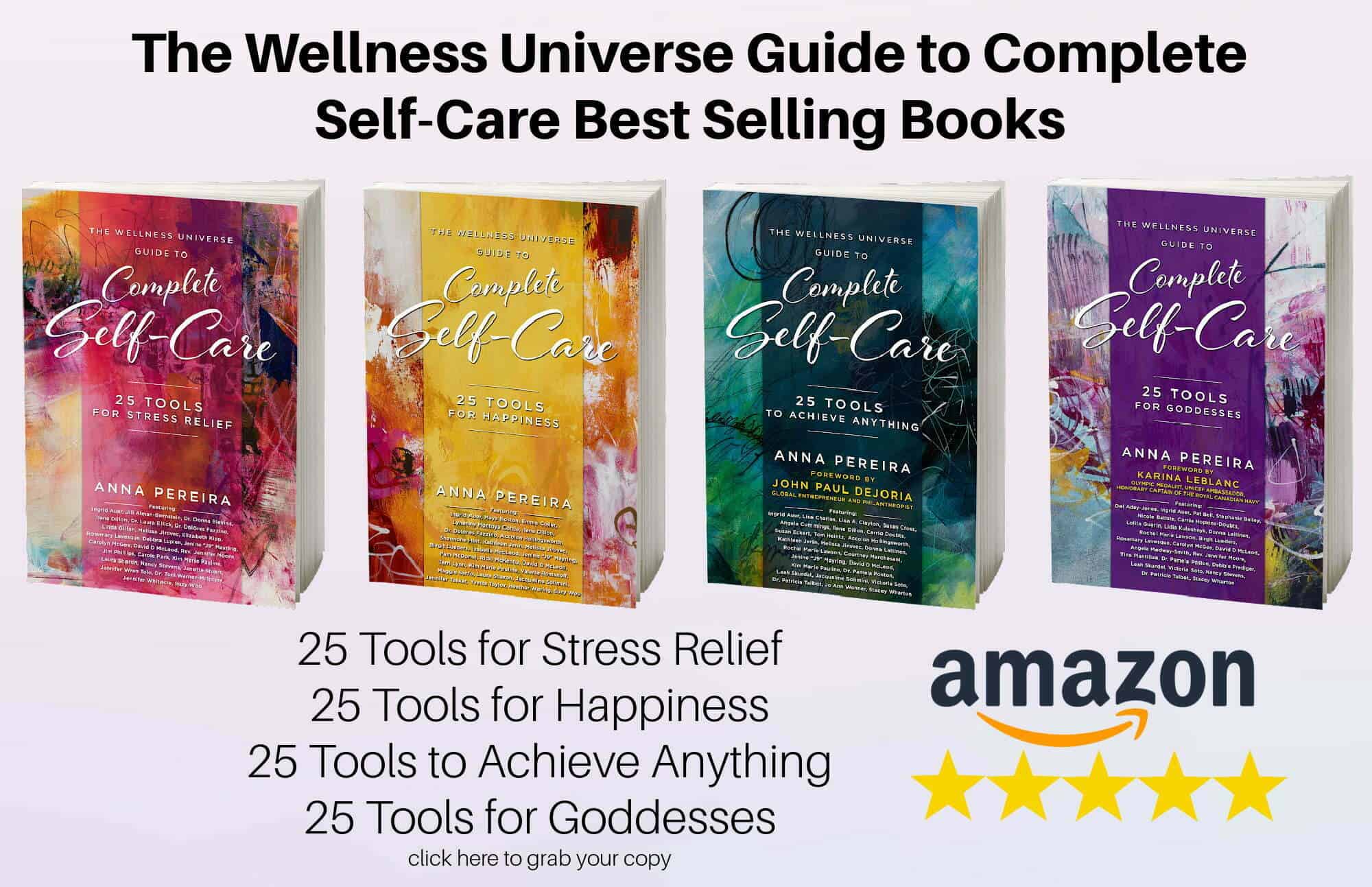
See how our self-care books are helping thousands of people around the world. Digital and paperback books are available now.
Connect to the people that help you live your best life: The Wellness Universe

Bonnie Sheldon, an EFT Master Trainer and Somatics expert and guides professionals in achieving stress relief and mindfulness through body-mind integration. Her programs promote self-care, ensuring workplace wellness and success without sacrificing personal well-being or relationships.
